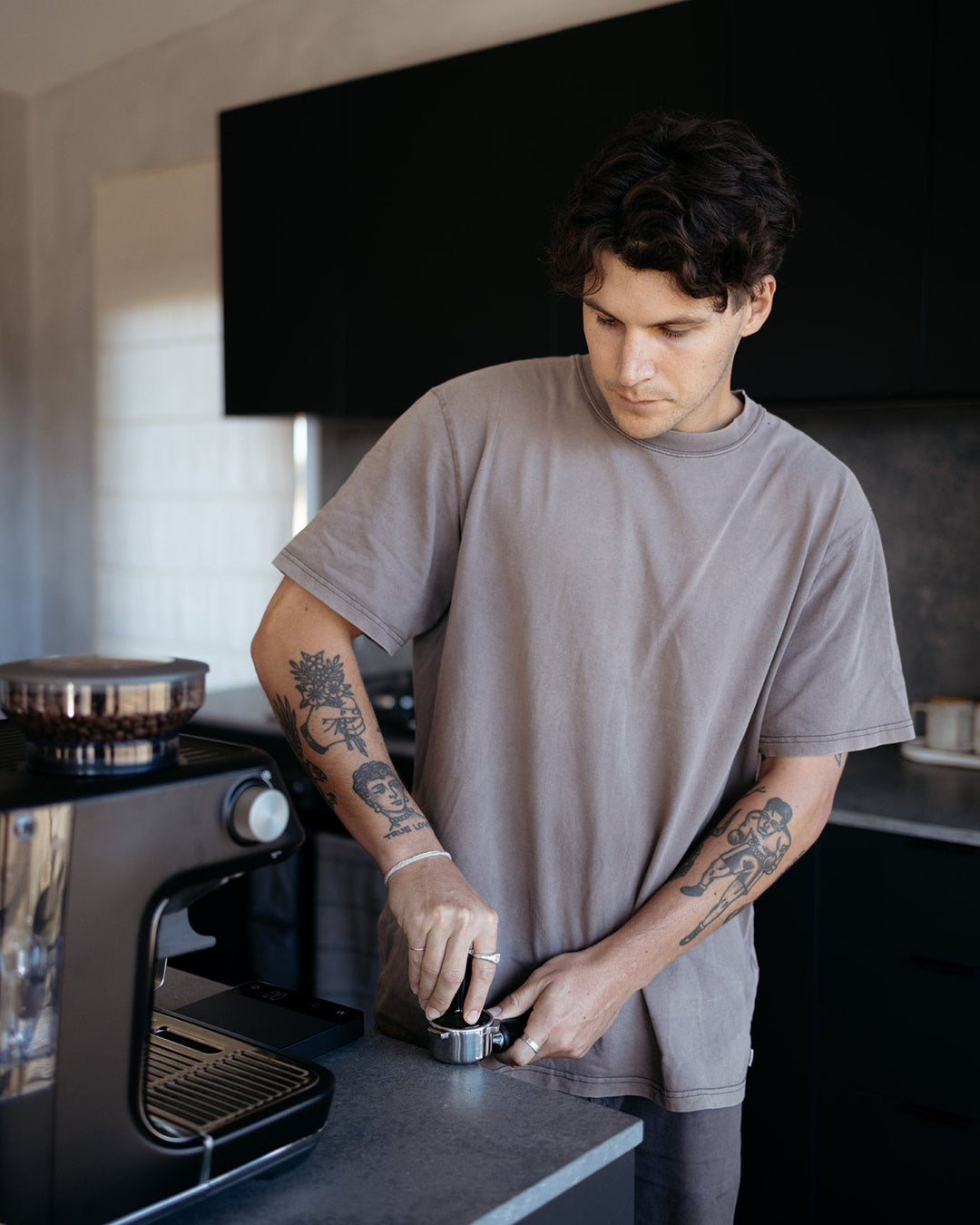Understanding Coffee Beans: the Journey From Espresso to Blended Coffee Beans

The Beginnings of Coffee: A Global Point Of View
While you might believe of coffee as a modern-day staple, its origins map back centuries, linking with societies throughout the globe. The tale starts in Ethiopia, where tale states a goat herdsman named Kaldi uncovered the stimulating impacts of coffee beans after discovering his goats frolicking vigorously after eating them.
As profession courses increased, coffee made its means to Europe in the 17th century, rapidly acquiring popularity. It changed from a mystical beverage into a daily ritual, intellectual exchanges and motivating celebrations. Each culture included its unique spin to coffee preparation, enriching its background. This international journey highlights exactly how coffee links us, going beyond boundaries and joining diverse practices with an easy bean.
Growing and Harvesting of Coffee Beans
As coffee's trip evolved, the focus shifted to the growing and harvesting of particular bean varieties, specifically those used for espresso. You'll locate that coffee beans commonly come from Arabica or Robusta plants, each offering distinct tastes. The optimal expanding conditions consist of high altitudes and abundant, well-drained soil, which improve the beans' quality.
During the harvest, choosing methods vary. In some regions, workers hand-pick ripe cherries, ensuring only the ideal fruit mosts likely to processing. In various other areas, mechanical farmers are utilized, especially on larger farms. When the cherries get to peak ripeness for optimum flavor., timing is vital; you desire to gather.
When gathered, the beans are gotten ready for processing, which is necessary in determining their final preference. Recognizing the farming and collecting processes provides you insight right into what enters into your favorite espresso, improving your appreciation for each mug.
Handling Approaches: From Cherry to Bean
Now that you've found out about harvesting coffee beans, let's check out just how those cherries change right into the coffee beans you like. You'll see exactly how various harvesting techniques influence taste, followed by the essential actions of fermentation and drying out. We'll break down the milling and grading procedure that determines your coffee's top quality.
Gathering Techniques Clarified
When it comes to coffee, recognizing harvesting methods is important, given that they straight affect the taste and top quality of the beans you appreciate. There are 2 primary methods: careful picking and strip picking. Selective choosing entails hand-picking only ripe cherries, ensuring you get the most effective quality beans. This technique commonly leads to a richer taste account, though it's more labor-intensive. On the other hand, strip selecting ways harvesting all cherries simultaneously, despite perfection. While it's quicker and less costly, this can result in a mix of flavors, affecting the end product. Ultimately, the choice of harvesting strategy can greatly affect your coffee experience, so it's worth recognizing exactly how those beans made it to your cup.
Fermentation and Drying
After harvesting, the following actions in processing coffee beans play a considerable role fit their taste. You'll locate that fermentation is crucial, as it aids break down the mucilage surrounding the beans, improving their taste account. Depending on the method, this procedure can last from a couple of hours to a number of days, with varying results based on temperature level and humidity.
Sun-drying allows the beans to take in tastes from the environment, while mechanical drying assurances regular wetness degrees no matter of weather. Appropriate drying is vital to avoid mold and protect the beans' quality, eventually influencing your mug of coffee.
Milling and Grading Process
As fermentation and drying set the phase for taste development, the milling and grading procedure warranties that only the finest coffee beans make it to your mug. This stage involves removing the external layers of the coffee cherry, consisting of the parchment and husk. Top quality beans get a higher grade, resulting in a richer coffee experience.
Toasting Strategies: Opening Flavor Potential
When you roast coffee beans, the method you pick can dramatically influence the flavor account. Recognizing the connection between time, temperature level, and roasting methods is key to exposing the potential of your brew. Let's explore how these elements come together to develop the ideal mug.
Roasting Methods Described
While you may think that all coffee toasting methods yield the same outcomes, the truth is that each method discloses special flavor capacities in the beans. Drum roasting uses a turning drum to uniformly disperse warmth, enhancing caramelization and generating a well balanced flavor. Air roasting, on the various other hand, distributes warm air around the beans, promoting a lighter roast with pronounced level of acidity.

Effect On Taste Profile
Different toasting approaches not just affect the process however additionally significantly impact the flavor profile of the coffee beans. Dark roasts, on the various other hand, bring out vibrant, smoky flavors, sometimes concealing the bean's one-of-a-kind characteristics. Recognizing these subtleties assists you value the artistry behind your cup of coffee, enhancing your overall experience with every sip.
Time and Temperature Level Factors
To release the full flavor possibility of coffee beans, both time and temperature during the toasting process play considerable functions. When roasting, you'll find that greater temperatures can promptly create flavors, but if you rush it, you might wind up with burned notes. Conversely, lower temperature levels enable an extra steady taste development, showcasing the beans' special features.

Timing is equally as important; extending discover this the roast as well long can bring about a loss of acidity and illumination, while also brief a roast might leave the beans underdeveloped. Finding that wonderful area needs technique and experimentation. By readjusting these elements, you can disclose the rich, complex tastes concealed within each bean, creating an absolutely amazing coffee experience.
The Art of Blending: Crafting Distinct Coffee Accounts

Start by selecting a base coffee that offers a strong structure. An intense Ethiopian bean can bring fruitiness, while a rich Brazilian coffee includes body.
As you blend, bear in mind that each combination tells a tale. You're not just making coffee; you're creating an experience. Take your time, taste regularly, and appreciate the trip of discovering your trademark mix - Single Origin Espresso.
Developing Approaches: Exactly How Prep Work Affects Taste
Mixing coffee opens up a domain of taste possibilities, yet just how you brew that mix can substantially affect your final cup. Various brewing techniques remove special flavors and aromas, so it's essential to select sensibly. As an example, a French press permits oils and sediments to continue to be, creating a rich, full-bodied experience. On the various other hand, a pour-over highlights the coffee's clearness and brightness, excellent for showcasing fragile notes.
Espresso, with its high pressure, produces a focused shot that highlights sweet taste and crema. If you like a lighter mixture, think about a cold mixture technique; it yields a smooth, much less acidic preference.
Readjusting variables like water temperature level, grind size, and make time can change your coffee's profile. Embrace the art of developing to find the flavors hidden in your coffee blends.
The Future of Coffee: Sustainability and Advancement
As the coffee sector advances, sustainability and advancement are becoming crucial for addressing ecological obstacles and conference consumer needs. You'll see that even more coffee business are embracing eco-friendly practices, from sourcing beans morally to carrying out lasting farming techniques. These changes not just assist the world yet likewise improve the quality of the coffee you delight in.
You may see technologies like eco-friendly product packaging and water-saving developing approaches that reduce waste. Advanced technology, such as blockchain, is likewise becoming preferred, making sure openness in the supply chain, which allows you to map your coffee back to its beginnings.
Furthermore, purchasing regional areas and supporting farmers via reasonable trade campaigns cultivates a more lasting coffee ecosystem. As you drink your Read More Here next mug, keep in mind that your choices can add to a brighter future for coffee. By selecting sustainable brands, you're not just appreciating a beverage; you're making a favorable effect on the globe.
Frequently Asked Questions
What Is the Difference Between Arabica and Robusta Beans?
Arabica beans are smoother, sweeter, and have a higher level of acidity, while robusta beans are more powerful, extra bitter, and contain even more high levels of caffeine. When brewing your coffee., you'll notice these differences in taste and scent.
Exactly How Does Elevation Affect Coffee Bean Taste?
Altitude influences coffee bean flavor substantially. Greater elevations create beans with brighter acidity and facility tastes, while lower elevations commonly yield beans that are heavier and less nuanced. You'll see these distinctions in your cup!
What Are the Health And Wellness Conveniences of Drinking Coffee?
Drinking coffee can improve your energy, improve psychological focus, and also boost physical performance. It's abundant in anti-oxidants, might reduce the threat of certain illness, and can advertise a much healthier metabolic rate when eaten in moderation.
Can Coffee Beans Be Reused for Developing?
Yes, you can reuse coffee beans for brewing, yet the taste could be weak. If you enjoy trying out, try recycling them in various ways, like chilly mixtures or including in smoothies for an additional kick.
How Should I Shop Coffee Beans for Freshness?
To maintain your coffee beans fresh, keep them in an airtight container in an awesome, dark area. Avoid subjecting them to dampness, warmth, or light, as these variables can promptly weaken their flavor and fragrance.
Comprehending Coffee Beans: the Trip From Coffee to Blended Coffee Beans.
Now that you have actually found out about harvesting espresso beans, let's explore exactly how those cherries transform into the coffee beans you love.When you roast coffee beans, the technique you choose can significantly influence the taste profile - Single Origin Espresso.While you may think that all coffee toasting approaches yield the same results, the reality is that each technique reveals unique flavor potentials in the beans.Different roasting techniques not just affect the procedure yet likewise considerably important link impact the taste account of the coffee beans